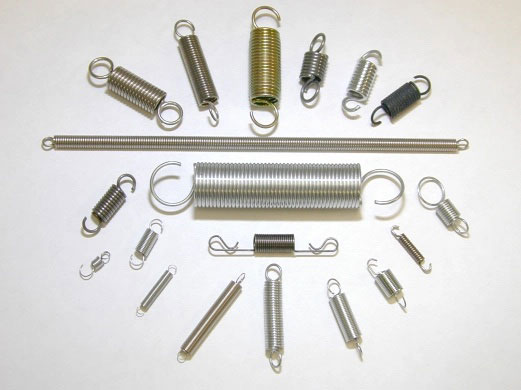Extension Springs

Extension Springs
An extension spring works in the opposite fashion as a compression spring, which exerts resistance to compressive forces when applied axially. An extension spring absorbs and stores energy and provides resistance to a pull force. All extension springs, or tension springs, are made similar in geometry. They are typically closed coil wound with the ends being fabricated to accommodate specific design requirements.
Most extension springs are wound with an initial tension. This is the internal force that holds the coils tightly together. The initial tension is measured as the load necessary to overcome the internal force and start to separate the coils. The end configurations can be manipulated into any shape and size, but the most popular designs are the machine hook, crossover hook, side hook, and extended hook; the final design depends on the application.
Tips for Designing an Extension Spring:
Extension springs can be designed to meet specific needs and applications, and they function in a manner suited for their purpose. When designing the spring, it is suggested that the engineer spec out no more than three fourths of the spring’s maximum working stress level. We would recommend that you consult with our spring engineers prior to finalizing your spring designs. In doing so, this will help to avoid failure of the assembly, potential costly repairs, and unnecessary downtime.
Extension springs have countless applications and can be found in all major household appliances, medical devices, military/aerospace devices, and so much more. Contact Rowley Spring today for all your extension spring and small extension spring needs.